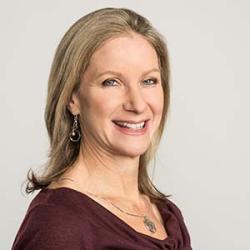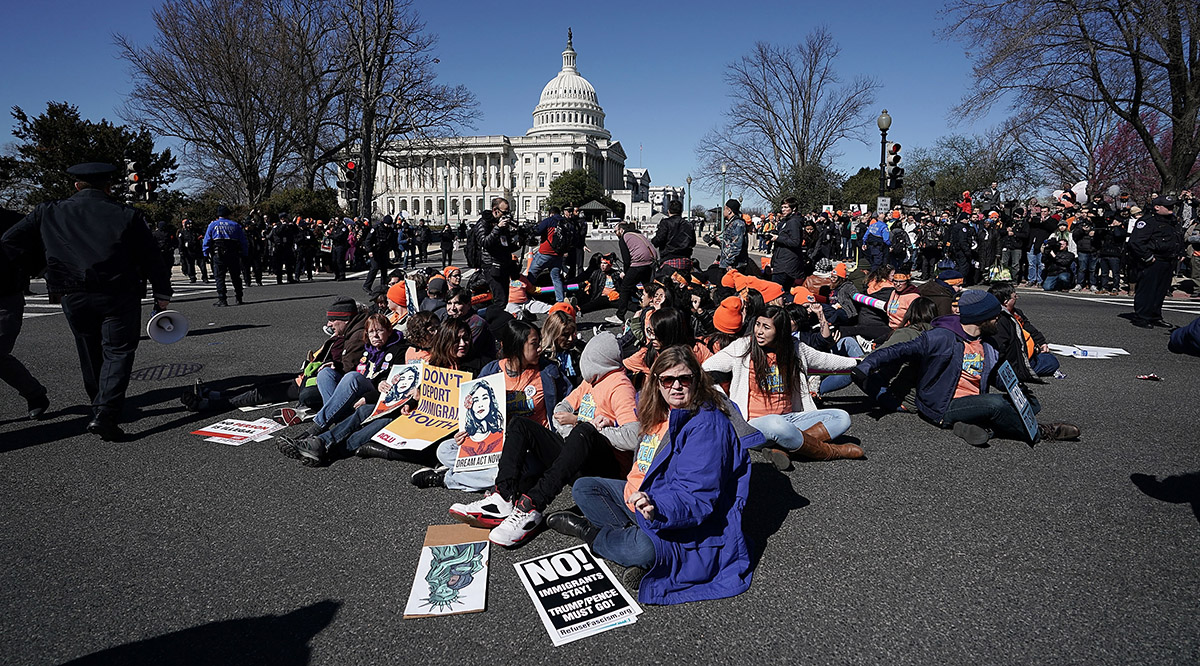
Jirayut New Latthivongskorn, MD, remembers the precise moment when his undocumented status threatened to derail his dreams for a better life for himself, his siblings, and his parents. After immigrating to the United States from Thailand with his family at the age of 9, he had worked hard throughout high school, earning acceptance into all five University of California (UC) colleges to which he had applied. UC Davis had even offered him a full scholarship.
But two months before school was to begin, UC Davis officials called to say that they were missing some critical documents. That’s when Latthivongskorn learned that without a social security card or green card, he was ineligible for the scholarship.
“It felt like I had done all the right things. All the things I was supposed to do. And then I had this offer of the American dream and I reached out to grab it and it was taken away,” Latthivongskorn recalled.
Ever pragmatic, his family rallied behind him. Extended aunts and uncles used their savings to help pay for his first year of college and, in subsequent years, he applied for and received additional scholarships that allowed him to earn his undergraduate degree in molecular and cellular biology from UC Berkeley, his medical degree from UC San Francisco, and his master’s degree in public health from Harvard T.H. Chan School of Public Health.
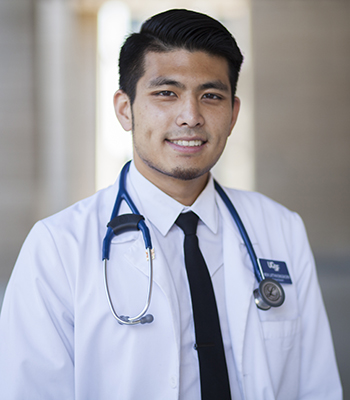 Jirayut New Latthivongskorn
Jirayut New Latthivongskorn
Along the way, he became an ardent advocate for immigrant rights issues, speaking in state legislatures and on Capitol Hill about the challenges faced by undocumented students. He also co-founded Pre-Health Dreamers, a nonprofit dedicated to helping its 800-plus undocumented student members navigate the complexities of pursuing careers in medicine, dentistry, nursing, and physical therapy.
Now a first-year medical resident in the UCSF/San Francisco General Hospital’s Family & Community Medicine department, Latthivongskorn is one of six plaintiffs on the lawsuit challenging the rescission of Deferred Action for Childhood Arrivals (DACA), the executive order issued by former President Barack Obama that has given nearly 1.2 million young people who were brought to the United States as children an opportunity to pursue higher education and work legally.
In November 2019, the U.S. Supreme Court will hear oral arguments in the case, which challenges a Department of Homeland Security memorandum in September 2017 to rescind DACA.
“I remember the day the lawyers reached out asking if I wanted to be a plaintiff on this case,” Latthivongskorn says. “I thought, ‘I have so much privilege and I did not do any of this on my own. I have the opportunity to advocate for change, not just for my family but for all of my good friends who are undocumented. There’s no way I’m not going to do this.’”
While the Supreme Court case hinges on whether the administration followed the correct procedure to rescind DACA, its resolution will ultimately determine whether roughly 190 medical students and residents have an opportunity to continue their dreams of becoming physicians.
AAMC data shows that upon completing residency, these 190 students and residents will provide care to between 293,000 and 879,000 patients, and over the course of a lifetime, they will touch the lives of 1.7 million to 5.1 million patients. They are just part of a workforce of 27,000 DACA recipients who are employed in health care practitioner and support occupations, according to a new Center for American Progress report.
“As the nation faces a shortage of as many as 122,000 physicians in the next 10 years, we cannot afford to lose even one physician, let alone 190,” says Atul Grover, MD, PhD, executive vice president of the AAMC. “DACA medical students are smart and dedicated. Any decision that limits our ability to attract the best and brightest minds to our profession will ultimately impact our goal of providing the highest quality care to a growing, aging, and increasingly diverse patient population.”
AAMCNews talked to ten DACA medical students and residents about their journeys to medical school, the challenges they faced as the undocumented children of immigrants, and the passion that drives them to pursue a career in medicine, despite tremendous obstacles.
Blanca Morales, 34
Fourth-year medical student, Harvard Medical School
“Wash your hands. Put on a sweater. We can’t afford to get sick.” Those words — uttered by Blanca Morales’ parents, who immigrated from Mexico when Morales was just 5 years old — were the extent of the preventive health care she and her two younger siblings received growing up in Southern California. Once, when her brother fell out of a tree and punctured his thigh, they took him to a small clinic and paid for his care out of pocket.
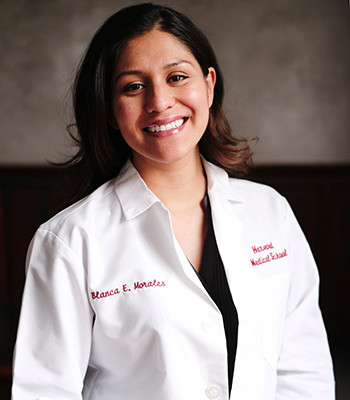 Blanca Morales
Blanca Morales
“Some of my family members had diabetes, but they were afraid to go to the doctor. They were afraid of being ‘found,’ and linked to their immigration status,” Morales recalls. “I remember thinking that we have all this new technology and these new advances in managing diabetes, but we can’t access them.”
That realization, along with a keen desire to help others who are marginalized, initially sparked Morales’ interest in medicine. But it would be years before she was able to apply to medical school. After graduating from high school, she spent four years at Santa Ana Community College before transferring to UC Irvine, where she got her undergraduate degree in neurobiology. That was in 2008, four years before DACA, so even with a degree, Morales could not work in her field.
She sold Mary Kay beauty products for a year, and then went to work as a volunteer in a clinical research lab at UC Irvine. The volunteer position slowly transitioned into a stipend position.
Then DACA passed, and everything changed. Morales started studying for the MCAT® exam while volunteering as a community educator and translator at a local health clinic. In 2016, eight years after graduating from college, she was accepted at Harvard Medical School.
“What DACA has done is brought us out of the shadows and allowed us to pursue our careers,” she says. “We can’t go back into the shadows. We just can’t. We have to find a solution that is going to allow us to contribute even more. And allow us to help make this country a better place.”
Ali Torabi, 28
First-year medical student, Loyola University Stritch School of Medicine
Ali Torabi has not seen his father in 24 years. Born in Iran, he immigrated to San Diego, California, with his mother and younger brother when he was four years old.
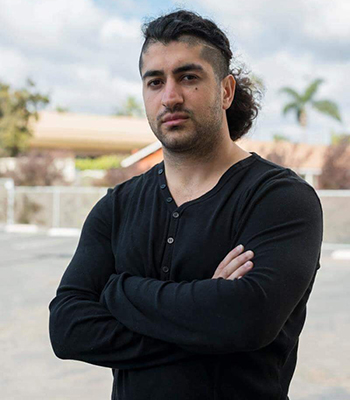 Ali Torabi
Ali Torabi
The family wasn’t supposed to split up. His parents wanted to immigrate together to be closer to his mother’s family and to provide Ali and his brother with opportunities for a better life. But his father wasn’t given a visa, and so his father stayed in Iran and the family moved to California to be close to his “aunties,” who are all U.S. citizens.
“When you’ve lived in this country all your life, you feel like your peers. I played football. I went from kindergarten to high school here. I had my first kiss. I fell in love.”
But as Torabi got older, his undocumented status kept getting in the way. He couldn’t get a driver’s license. He couldn’t apply for financial aid to go to college. And he couldn’t go the doctor when he got sick. “The older I got, the more I recognized the disparities between my community and the communities that had access to health care. I’ve had injuries where I’ve avoided going to the hospital not because I didn’t trust the doctors but because broken bones are expensive. And it made me realize I wanted to do something about that.”
When DACA passed in 2012, he went to college, and then started volunteering at UC San Diego’s student-run free clinic. He also founded the San Diego Border Dreamers with a few other DACA recipients to call attention to the additional challenges faced by immigrants living along the border. “When you’re undocumented at the border, you’re targeted by ICE and the border patrol,” he says. From there, he got involved with the San Diego Immigrant Rights Consortium, and began advocating to expand access to Medicaid (known as Medi-Cal in California) to older immigrants.
“It’s hard to see members of my community with diseases that could be cured if they were allowed to go to a clinic,” Torabi says. “There’s no reason why I can’t be that doctor to provide that health care and access to health care.”
Sharjeel Syed, 25
Fourth-year medical student, Stanford Medical School
When he was six years old, Sharjeel Syed witnessed his grandfather’s death from a heart attack. “He passed away before my very eyes,” recalls Syed, who immigrated to the United States with his parents from Pakistan when he was less than a year old. “It was a traumatic experience, and it was largely preventable if he had been able to visit a doctor.”
In fact, until he went to college, Syed had himself never been to a doctor — or a dentist. “At first, I thought it was my dad being cheap,” he says ruefully. “I didn’t know the real reason.”
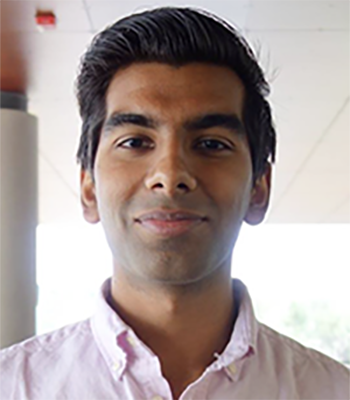 Sharjeel Syed
Sharjeel Syed
The real reason, he learned when his dad sat him down right before he started high school, was because he was undocumented. “He told me essentially that I wouldn’t be able to go to college unless I was able to get a full scholarship. I was already motivated, but that just gave me more reason to study.”
Syed did get a full scholarship — to Dartmouth for his undergraduate degree and then to Stanford for medical school. “In retrospect, I feel so blessed. Getting into those schools speaks to the caliber of those schools. Not many universities who can pay for students will consider DACA recipients.”
At the moment, he is applying to internal medicine residencies, and he hopes to one day work in public health and public advocacy. “Seeing these barriers to health care access, and all the extra hurdles you have to go through when you are underprivileged, makes me want to use my platform as a physician to create solutions,” he says. “I want to make sure that what happened to my grandfather doesn’t happen to someone else.”
Yazmin Irazoqui Ruiz, 27
Fourth-year medical student, University of New Mexico School of Medicine
Growing up with her twin sister and mother in Phoenix, Arizona, Yazmin Irazoqui Ruiz had no idea that she was undocumented. That is, until her mother had a stroke. “My sister and I were 16, so we thought, ‘We’ll just go get jobs to help mom with the family expenses.’”
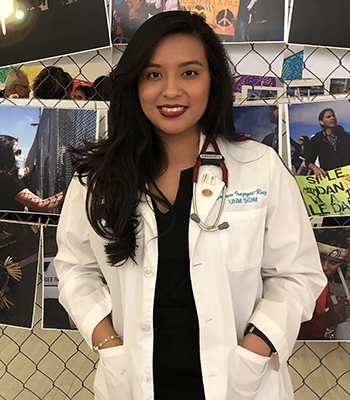 Yazmin Irazoqui Ruiz
Yazmin Irazoqui Ruiz
Not only could Yazmin and Jazmin not work, but they couldn’t get driver’s licenses and they couldn’t go to college. To top things off, Phoenix had become a dangerous place for immigrants under Maricopa County Sheriff Joe Arpaio, the controversial law enforcement officer who gained notoriety for his crackdown on undocumented immigrants. “We had heard of family friends getting picked up in immigration raids, so our family decided to move to Albuquerque, New Mexico,” Yazmin recalls.
Once in Albuquerque, the girls were able to gain access to in-state tuition and scholarships to attend the University of New Mexico. After DACA passed, they got work permits and social security numbers, documents that aided their pursuit of professional degrees.
In 2015, Yazmin matriculated into medical school; her twin sister went to law school and is now a practicing attorney, offering business, tax, and consumer protection legal advice to immigrant entrepreneurs. Jazmin was the first DACA graduate to be admitted to the New Mexico State Bar.
As for Yazmin, she is in the process of applying to residency, and continues to advocate for her right to pursue a career in medicine. “I don’t know what I’d do if DACA was rescinded,” she says. “I was raised in this country and I don’t know anything other than here,” having been brought to the United States when she was three. “I came to medical school so that I could eventually provide care to people like my mom and my grandmother, who had breast cancer that wasn’t detected until it metastasized. My grandmother wouldn’t have had metastatic breast cancer if she had had access to health care.”
Cesar Montolongo, 30
Fifth-year MD-PhD candidate, Loyola University Stritch School of Medicine
When Cesar Montolongo was 7, his father became violently ill. At the time, he and his family lived on the outskirts of Ciudad Juarez, just across the Texas-Mexico border from El Paso, Texas, in a home with no electricity and no running water. There was barely enough money for food; there certainly was none for his father to see a doctor.
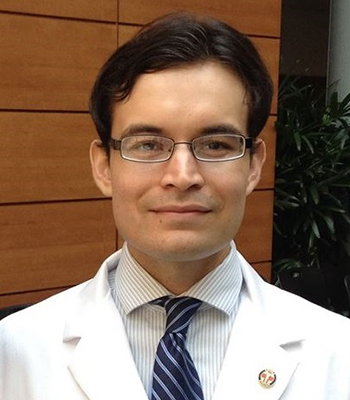 Cesar Montolongo
Cesar Montolongo
“He was in pain on a daily basis,” Montolongo recalls. “It left a huge impression on me.”
Ciudad Juarez has long been a violent city, situated as it is along one of the primary drug trafficking routes between Mexico and the United States. But in the next few years, it became even more so, and when Montolongo was 10, the family decided to immigrate to the United States, settling in Las Cruces, New Mexico, near his grandmother.
For the next decade, Montolongo never left Las Cruces. “There were checkpoints all around; we didn’t want to run the risk of being deported,” he says.
He didn’t expect to go to college, but he scored well enough on the ACTs to earn a scholarship to New Mexico State University, where he received bachelor’s degrees in biology, microbiology, and Spanish. He even took the MCAT exam and did well, but without papers, he was stuck. “I wasn’t going anywhere because I couldn’t even leave the city,” he recalls. “I kept thinking, ‘Do I give up and find another profession or do I try to be a doctor?’ I decided I would rather dream and fail than not try.”
Because his MCAT scores were about to expire, he retook the exam, doing even better the second time. Weeks later, DACA was announced. He went back to New Mexico State to get his master’s degree in biology and then applied to the MD-PhD program at Loyola, which was the first U.S. medical school to openly welcome DACA students.
And his dad? “The saddest thing was that my dad just had diabetes,” Montolongo says. “The sugar in his blood was just too high. If we had had access to care, he could have avoided years of pain.”
While he hasn’t decided on a specialty, Montolongo is pretty certain he wants to go into diagnostic medicine. “I want to help people before they get sick,” he says. “I want to develop diagnostic tools and algorithms that can pick up on diseases before they get out of hand.”
Denisse Rojas, 30
Fourth-year student, MD-MPP candidate, Icahn School of Medicine at Mount Sinai and Harvard Kennedy School of Government
After immigrating from Mexico to California in 1990, the Rojas family enlisted the services of an attorney they heard could help them become U.S. citizens. Instead, “he took our money and left,” Rojas recalls, and the result has been the scattering of her immediate family across North America.
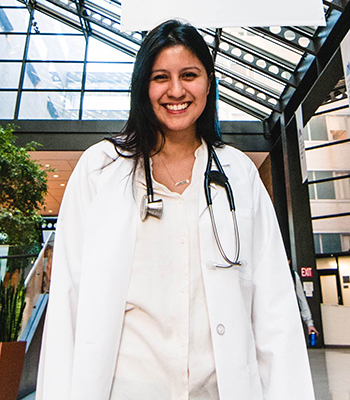 Denisse Rojas
Denisse Rojas
Her older brother immigrated to Canada in 2007 to find work — he has since become a Canadian citizen. Her mother left in 2011 in part because she needed immediate surgery for a serious medical condition, and her father left the United States for Canada in 2013.
“They all have access to health care in Canada,” Rojas says. “That was eye opening for me. I realized that not having access to health care means you could die, and it really exposed the difficult choices that people have to make.”
For Rojas, deciding to become a doctor wasn’t the difficult part; finding the resources and support to get to medical school was. After graduating from UC Berkeley, she wasn’t sure how to even apply. But she kept asking questions and eventually, with the help of her sister, mentors from a premed program at UCSF, and the peer support of other undocumented students, she applied to and was accepted into the Icahn School of Medicine at Mount Sinai. She is also a co-founder of Pre-Health Dreamers, and she has testified before Congress on the impact a rescission of DACA would have on medical students like her.
“DACA has been the key that has let me continue my education,” she says. “It has really opened up so many doors. But I wouldn’t be in med school were it not for my mom and dad and the sacrifices they made. My mom immigrated to the United States without a high school education, but she earned her GED and enrolled in nursing school. She’s a source of light and inspiration to me. If my mom can do this, I can absolutely do this as well.”
Sumbul Siddiqui, 26
First-year MD-MPH student, Loyola University Stritch School of Medicine
Growing up in Georgia, the daughter of Pakistani immigrants, Sumbul Siddiqui knew her family was underprivileged. But it wasn’t until her parents started having health issues that the family’s undocumented status sank in.
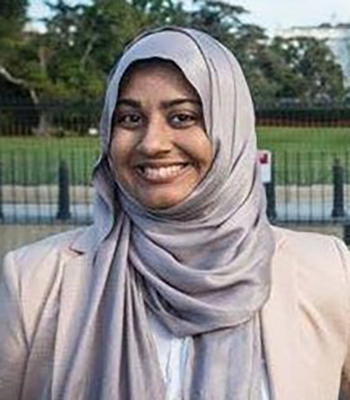 Sumbul Siddiqui
Sumbul Siddiqui
“My mother was very anemic and she would faint, but we didn’t understand what was going on. My father would get gout, but the treatment was so much money — $300 or $400 — that he would just say, ‘We can’t afford this. I have to take care of my family first. I will just live with the pain.’”
Desperate to find help, Siddiqui researched health clinics for low-income Muslims and finally found one about an hour outside Atlanta. It was a Shifa Clinic — “shifa means healing in Arabic,” Siddiqui explains — and she convinced her mother to go.
“They figured out she was anemic and needed to take iron. And they connected us to an OB-GYN. As we continued to follow up, she was getting a lot better. I started noticing there were more people like us. From initially wanting just to help my mother, I decided I wanted to help everyone.”
Siddiqui got on the premed track at school, but her premed advisor told her she had very little chance of getting into medical school as an undocumented person. Devastated, she went home and googled DACA and medical school. Loyola popped up, and from then on, Sumbul set her sights on Chicago.
“I eventually see myself wanting to work in an underserved area,” she says. “There are a lot of people like my parents who delay care or wait until something terrible happens and they have to go to the ED. I want to be part of the change for people who are struggling. I want to be able to advocate for good health care for everyone.”
Christian Ugaz Valencia, 26
Second-year medical student, Stanford University School of Medicine
Christian Ugaz Valencia remembers the bus ride from Miami, Florida, to Union City, New Jersey, when he was 7. He remembers that his parents enrolled him in school that summer, which wasn’t all that unusual, since kids from his native Peru often went to school during the warmer months. And he remembers, years later, that his older brother had trouble getting into college because he was undocumented.
He also remembers thinking how odd it was that so many of his neighbors used the town’s annual health fair as their sole opportunity to see a doctor. “We didn’t have health insurance for most of my life,” he says. “We only went to see a doctor when things got bad.”
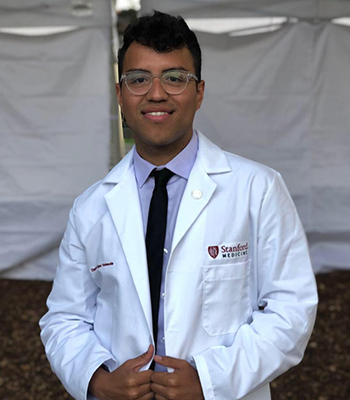 Christian Ugaz Valencia
Christian Ugaz Valencia
Things did get bad for Valencia’s mom and dad — his father developed advanced prostate cancer and his mother had a brain tumor. “My dad knew something was wrong with him, but he only saw a doctor every now and then in the community. Finally, he went to a hospital that had charity care, where they told him he had cancer. My mom had pretty intense headaches. It took a while to find out what it was. The brain tumor was benign, but she still needed surgery.”
Valencia attended a small Jesuit college near his hometown — St. Peter’s University — and then took two gap years, during which he worked as a clinical research coordinator at the Icahn School of Medicine.
Now in his second year at Stanford School of Medicine, he is thinking about neurology or psychiatry — “I’m really interested in the brain,” he says — and working with underserved communities. “I want to work with undocumented patients and uninsured patients,” he says.
Kryssia Campos, 29
First-year medical student, Michigan State University College of Human Medicine
From the time she was a teenager, Kryssia Campos knew she wanted to be a doctor. After immigrating with her family to California from El Salvador at the age of 13, Campos was keenly aware of the differences between herself and her American-born friends. It wasn’t just the language barrier, though; it was also the cultural differences and the fact that when a member of her family got sick, they couldn’t see a doctor.
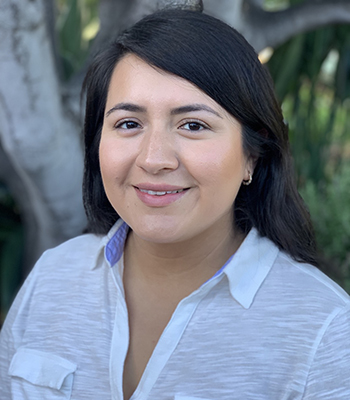 Kryssia Campos
Kryssia Campos
“When we got sick, we would just wait it out or we would go to the ER,” Campos recalls. “In addition to that experience of not being able to access health care, I realized that there was a real need for physicians who looked like me and who understood our culture.”
After graduating from a small Catholic girls’ high school in Inglewood, California, Campos completed her first two years of college at the local community college, then transferred to the University of California, Los Angeles (UCLA), where she majored in psychobiology. To bolster her medical school application, she worked as a research coordinator at UCLA. And she volunteered for and then sat on the board of the Clinica Monsignor Romero community clinic that serves underserved populations in Los Angeles, California.
“One of the biggest challenges for us at the clinic was physician retention,” Campos says. “Salaries at a community clinic are not as competitive as those at a private hospital, so you really need to have a passion for this type of work. And you have to have adequate funding to provide that care. How many undocumented patients can you see without having the clinic go bankrupt?”
While she’s still years away from being able to practice medicine, Campos feels drawn to family medicine and is committed to serving immigrant communities. “I want to keep my mind open to all of my options, but women of color, and particularly queer women of color, don’t always have access to quality health care. We can do better.”
